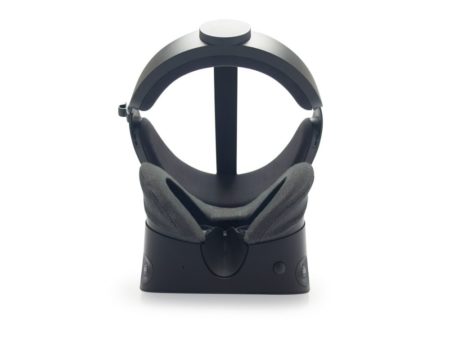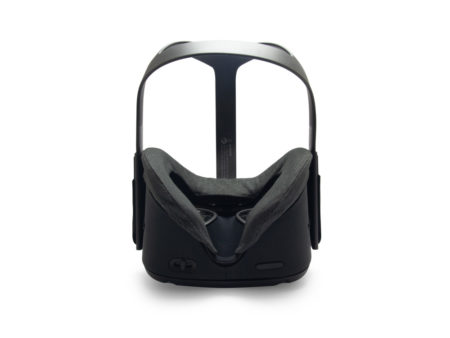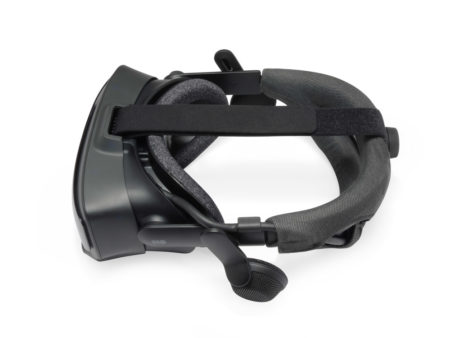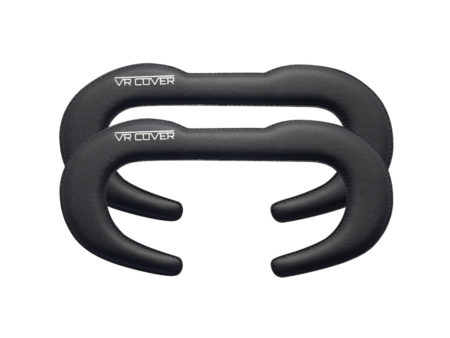Can You Get Fit in VR?
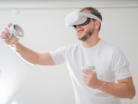
Since the pandemic, more people have been turning to VR for workouts. With limited access to gyms because of lockdowns, many are able to find exercise through VR apps. Whether it is burning calories, engaging in high-intensity cardio or building muscle, getting fit can be achieved with a VR headset.
While gyms may be open again, interest in VR fitness remains strong as Google Trends show. So what are some of the reasons for the demand?
Fun and Immersive Experiences
We can all agree that fitness should be fun, something that VR accomplishes so well with amazing visuals, gameplay and sound. Meta Quest, in a recent ad, declared that “cardio that doesn’t suck is ready”. Head over to their store to browse the huge variety of VR titles. From apps designed for fitness to intense action games, there are plenty of options to keep you entertained while giving you a full-body workout.
Some popular titles worth checking out include:
- Exercise apps – FitXR, Supernatural, Les Mills Bodycombat, HoloFit, VZFit
- Rhythm games – Beat Saber, Synth Riders, Oh Shape, Pistol Whip
- Action games – Until You Fall, Superhot VR, Phantom: Covert Ops, In Death: Unchained, Space Pirate Trainer
- Sports-focused apps – The Climb, Thrill of the Fight, Creed, Holopoint, Carve Snowboarding, Eleven (Table Tennis)
These apps are so fun and immersive that you forget about the physical exertion. With Supernatural, for example, you smash oncoming targets with your controllers while squatting and lunging to fit inside triangles. There are hundreds of workouts guided by real life trainers and you get to do them to the beat of awesome music while standing in stunning landscapes.
FitXR combines a great mix of video gaming and working out. It offers HIIT, boxing, and dance classes accompanied by an excellent soundtrack and motivational instructors. There is even a Multiplayer feature which lets you work out with a small group of people at the same time.
Effective Workouts
But can VR really make you fit? Fitness apps are certainly designed to do just that. They typically have you performing a combination of moves that you do not usually do in real-life workouts. VR games that are not fitness-focused can also be physically demanding enough to leave you feeling sore in places you never knew existed. In Beat Saber, a game that involves slashing cubes and dodging walls, the sessions level up in difficulty, requiring faster and more body movements. Much like actual sports and exercise, apps like Supernatural and Beat Saber can improve hand-eye coordination and reaction time.
For your VR workouts, you can use a Quest 2 movement tracker to keep track of the calories you burn, the amount of time you are physically active in VR and personal goals reached.
The Virtual Reality Institute of Health and Exercise measures the metabolic impact of VR games and compares them to exercises like running and biking. In Beat Saber’s case, it has a similar calorie burn rate as playing tennis.
The high metabolic rate from these games is partly attributed to people expending more energy without realizing it. This is because the immersive experience VR provides is oftentimes more motivating than working out in a gym. Key to maintaining engagement is gamification which rewards players to encourage them to do more.
Not everyone is in favor of working out in the virtual realm, at least not yet. The cost and weight of VR headsets are barriers to the wide adoption of VR for fitness. Sweating into the gear is also something many are uncomfortable with though managing the hygiene aspect of it is easy with solutions like the VR Cover Fitness Facial Interface and Foam Set for Meta Quest 2.
Despite these challenges, this form of medium is steadily gaining popularity and acceptance that working out in VR can get you fit. From personal trainers to athletes, VR apps are being used more and more to supplement or replace traditional training methods. As the technology continues to evolve, VR certainly has the potential to further revolutionize how we work out and become an integral part of a healthy, active lifestyle.
Ways to Make Your Meta Quest 2 More Comfortable
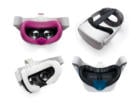
If you are looking to make your Meta Quest 2 more comfortable, read on! We have included some useful advice here on relieving the pressure from the front-heavy headset, getting the best fit for your glasses and accessory recommendations that will enhance comfort and improve your VR experience.
When Meta launched Quest 2 in 2020, one of the improvements highlighted about the new headset was the weight. Quest 2 is 10% lighter than the original Quest.
Sony’s upcoming PlayStation VR2 headset is also lighter than the previous generation. LIkewise, Apple could potentially release an AR/VR headset that is slimmer in design than the current crop of devices on the market.
Making headsets smaller and lighter is a goal among VR manufacturers. Reducing the weight will enable people to wear the headset longer and spend more time in VR.
It is a common gripe that the headsets today feel heavy, leave pressure marks on the face after a session and even cause neck pain.
Another complaint is the foam gaskets can quickly become hotbeds of germs as sweat and dirt get trapped in the porous material. Wearing a dirty headset spoils the immersion because you would be less focused on the game and more worried about catching something nasty.
Wearing glasses with the headset can also be uncomfortable for some people, especially if the prescription frames are thicker than the recommended guidelines from manufacturers.
Let us now look at some ways to address each issue and how we can improve the level of comfort.
Reduce the Pressure
One way to make the VR headset less painful on the head is to adjust the head strap. Make sure the head strap is not too tight or too loose. The head strap should be tight enough that the VR headset does not move around on your head but loose enough that it is comfortable. Try to get the headset to sit evenly on your face; otherwise, it can cause pressure points and discomfort.
Another way to make the head strap more comfortable is to get an Elite Strap or a halo style strap. These head straps are designed to take some pressure off the face by redistributing it to the top of your head.
The extra weight at the back of the Elite strap also acts as a counterbalance to the front-heavy headset. The Elite Strap with Battery offers a similar benefit except it packs even more weight in the rear since it includes an extra battery.
For a solution that complements the Elite Strap, there is the VR Cover Elite Headstrap Foam Pad which cups the back of your head with soft cushioning and makes the strap feel more snug and ergonomic.
Wearing Prescription Glasses with the Headset
If you are using the original strap on Quest 2, you would want the strap to go on last. We suggest wearing the headset this way:
- Place the headset on your face and fit your glasses inside, making sure they are not touching the lens.
- Bring the strap over your head.
- If your glasses are pressing uncomfortably against you at this point, try pushing forward the arms of the frames just above your ears. This will shift them slightly away from your eyes.
- Adjust the strap on the sides so that they are not pressing your ears against the frames.
Thicker prescription glasses can benefit from using a glasses spacer, whether it is the spacer that comes with the headset or the VR Cover versions – XL Spacer (FAQs here) and VR Cover Facial Interface Spacer (FAQs here). A glasses spacer creates a bit more gap between your glasses and the lens and reduces the possibility of them brushing up against each other and causing scratches.
You can also consider switching to custom made prescription lens inserts. With them, you never have to worry about how your glasses are fitting in the headset or potential scratches to the lens. VR Lens Lab sells prescription lens inserts specially designed for different headsets.
Enhance Hygiene
Always wipe down the headset before and after every VR session. Use a microfiber cloth or anti-bacterial wipes. We recommend alcohol-free and skin-friendly wipes as these will not harm the surface of the headset or leave a sticky residue.
For a more sanitary option, try utilizing a washable VR Cover, Silicone Cover or a wipeable, adjustable foam replacement such as the Facial Interface and Foam Replacement or the Fitness Facial Interface and Foam Replacement. These cleanable accessories not only reduce the build-up of sweat and dirt, they also extend the shelf life of your equipment by keeping it in good condition for longer.
Disposable covers are convenient to have in a multi-user setting where you need a quick change of covers before passing the headset on to another person.
By following some of these tips, you will be able to get the most out of your headset, improve the comfort and experience the best possible VR.
